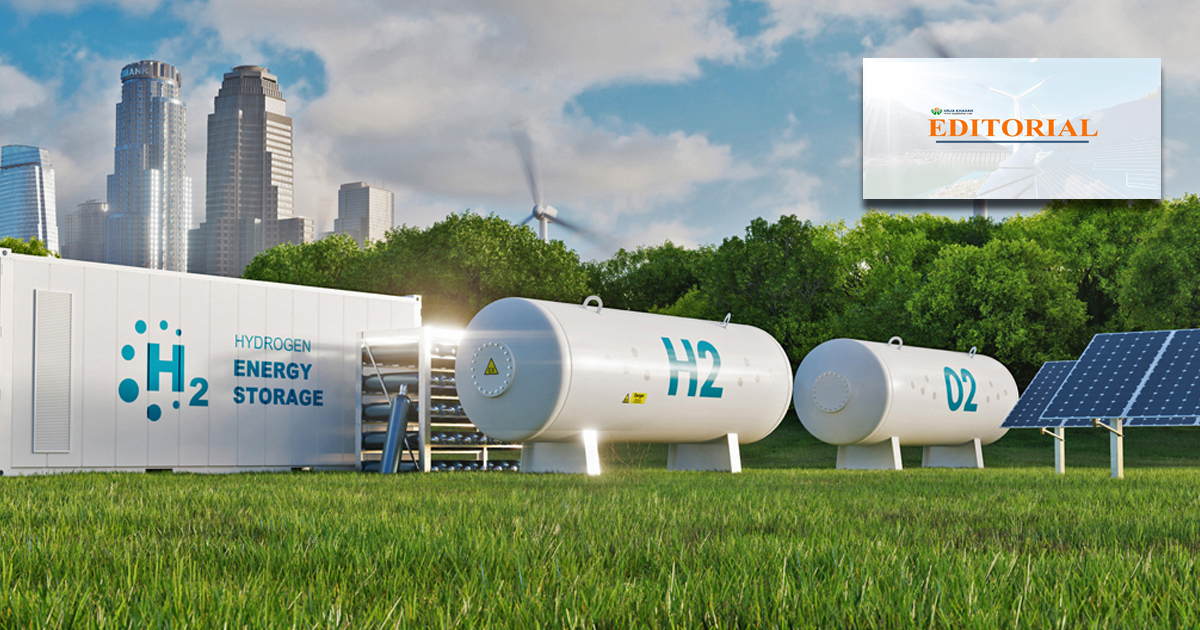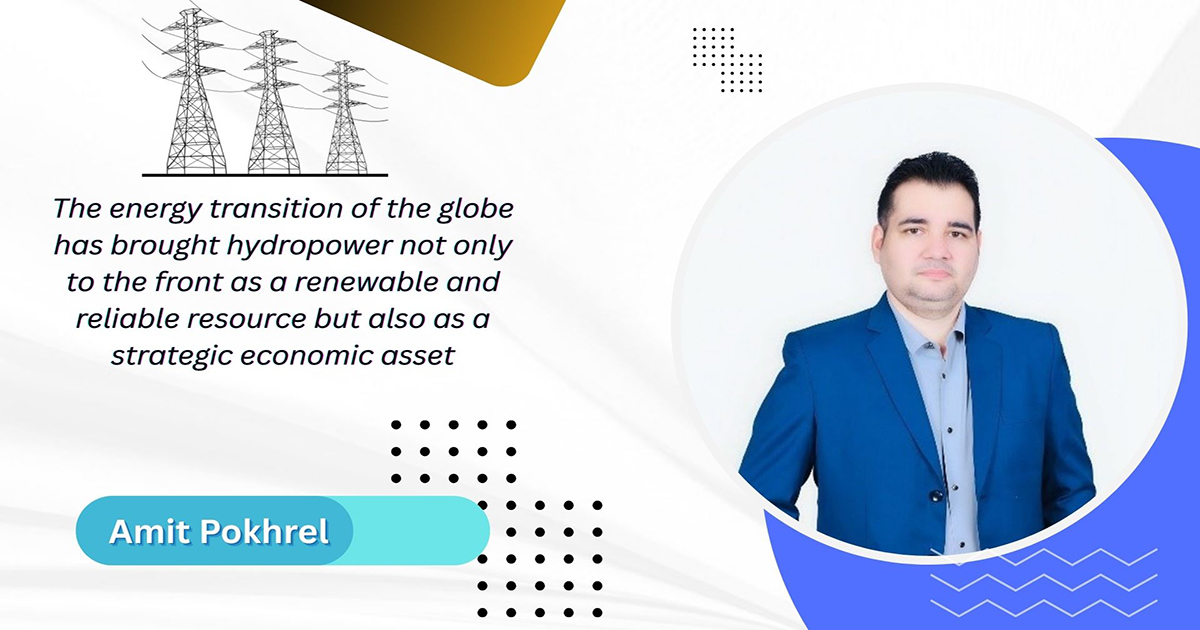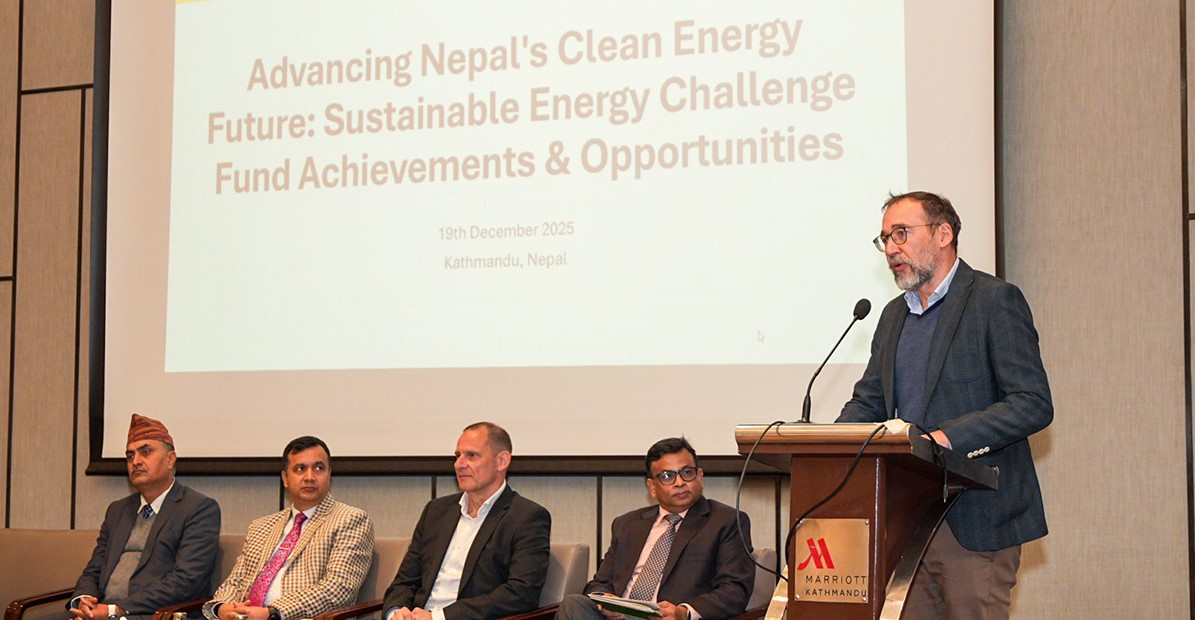Energy Update
EDITORIAL
Commercialization of Green Hydrogen

Today, the primary sources of el available in the world are mostly derived from the Earth's inerals. As the Earth ages and its ructures change, these mineral sources will soon be depleted th their enhanced use. Many of wese resources, which come from msilized remains of animals and ants, are at risk of becoming arce in the future. Some untries may also face situations en they cannot sustain such ineral production.
Therefore, new sources that can be utilized for human life are being sought. One such invention is hdrogen, which is abundantly available on Earth and in the atmosphere. The simplest method to produce hydrogen is by splitting water through a process called electrolysis, which uses electricity separate water into hydrogen and oxygen gases.

With the dynamic pace of human development, energy has become essential element in daily life. Vrious energy sources have been discovered on Earth. Apart from Coal, natural gas, and fossil fuels to hydropower, solar, wind, and nuclear power, hydrogen can be considered reliable alternative source of energy. Various studies we shown that the initial use of hydrogen gas started about 200 years ago. In recent decades, it has emerged not hydrogen gas as such, but as 'green hydrogen. Due to rapid climate change, there is a global campaign to cap the Earth's temperature rise to 1.5 degrees Celsius. Green hydrogen is considered a sustainable and reliable energy source to support this campaign.
Hydrogen can be used to produce ammonia for chemical fertilizers. vanaspati ghee from vegetable oils through hydrogenation, highly useful chemicals like methanol and hydrogen chloride. Hydrogen can also be produced and stored to be used as energy. Such energy can also be utilized in kitchens and transportation, among others. Hydrogen being used in industrial sector is produced by using electricity generated by using fossil fuels.

Accordingly, hydrogen is perceived as potential substance for use (i) in industrial processes like metallurgical extractions, hydrogenation and preparing important chemicals like methanol and hydrogen chloride, (ii) in manufacture of nitrogenous fertilizers and (iii) in transformation of energy to facilitate transportation and storing energy as well as for use as fuel substitute in transportation, industrial sector and kitchens.
Using hydrogen as energy source is an emerging concept. To combat the adverse effects of carbon emissions, the world has aggressively moved towards the production of renewable energy. There are plans to gradually reduce the use of polluting energy sources. Renewable energy sources are inherently intermittent. making their storage and usage challenging. However, they are considered essential sources of clean energy for the future.
Today, with the abundance of electricity production worldwide, storage batteries are being used to operate electric vehicles. However, these batteries have limited capacity. Experts have analyzed that battery power and energy capacity may not be effective for heavy duty vehicles like trucks and in the aviation sector. On the other hand, studies have confirmed that hydrogen can be stored and used in maritime ships, aviation, trucks, or railways. Green hydrogen can significantly reduce the large amount of carbon emitted in the transportation sector. The battery storage system also creates another challenge of managing electronic waste, which does not occur in the context of hydrogen fuel.
Hydrogen has been tested reliable not only in transportation but also in kitchen (hydrogen-cooking). As claimed by researchers of the sector, green hydrogen can be considered a fundamental source to substitute fossil fuels and end carbon emissions from the transportation sector and kitchens. However, the use of hydrogen in the transportation. industry and kitchens is still in trial phase.
Nepal is also following the global trend of testing, using, and commercializing green hydrogen. It appears that the discussion on this issue started with professors from Pulchowk Engineering Campus in 2007. Since then, Kathmandu University (KU) has been working on the research, testing, and commercial possibilities of green hydrogen. The establishment of the 'Green Hydrogen Lab' in the university premises confirms its aggressive initiative.
Similarly, the Nepal Energy Foundation (NEF) has taken the lead from the private and non-governmental sectors. With joint efforts from foreign donor agencies and NEF, there has been a successful demonstration of cooking local meals on hydrogen stove using hydrogen as fuel in the premises of Kharbang micro-hydro power center in Badigad Rural Municipality of Baglung District. However, until the challenges of production cost, storage, and utilization are resolved sustainably, it seems that meaningful commercial use of hydrogen for cooking will take more time.
In context of Nepal, there are emerging questions like who will produce green hydrogen or sell it like electricity, who will buy the stored hydrogen, where is the market for 'green cells' produced from hydrogen; where and to whom will it be sold? Even though the government has introduced the 'Green Hydrogen Policy, 2080', it does not seem to provide future pathway clearly. This policy appears to have been introduced to meet formalities under pressure from universities, the private sector, and researchers.
There is no clear stance of the state or the government on 'green hydrogen' or 'hydrogen as energy'. Neither there has been any debate regarding green hydrogen energy at policy level nor it is given. importance in the annual budget. Legal and regulatory framework for production, marketing and use of green hydrogen should be given space in related act, regulation and guidelines. Even if all these tasks are completed, provided the cost of hydrogen production is not within affordable range or competitive compared to other fuels, commercial use of hydrogen as substitute energy will not gain pace.
There are no proper storage system of petroleum products inside the country. Every year, billions of rupees are being spent to import such fuels. On the other hand, Nepal has abundant clean natural resources (hydropower, solar, and wind) to produce 'green hydrogen' through electricity. If it can be commercialized in transportation, kitchens, industries, etc., it could be a boon for Nepal. It will prevent the outflow of a significant amount of money to purchase fossil fuel from abroad. Additionally, as discussions are going on about the development of a market worth 13 trillion US dollars for green hydrogen globally, it could open regional market for Nepal as well.
The country is being called for leading the commercialization of 'green hydrogen' as an alternative fuel for the transportation industry and kitchens. For that, appropriate laws, regulatory bodies, and institutional structures are needed to set up. Under such laws, a 'Hydrogen Energy Development and Commercialization Authority' can be formed. This entity can be given authority develop policies, regulations, and guidelines for the development and commercialization of green hydrogen, clearly outlining the production, storage, and market. This work must begin from today.
This Editorial is taken from 6th issue of Urja Khabar bi-annual Journal Publish on 15th June, 2024
Conversation
- Info. Dept. Reg. No. : 254/073/74
- Telephone : +977-1-5321303
- Email : [email protected]













